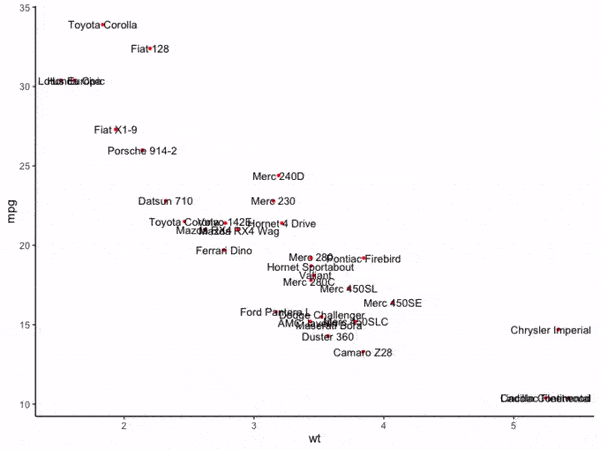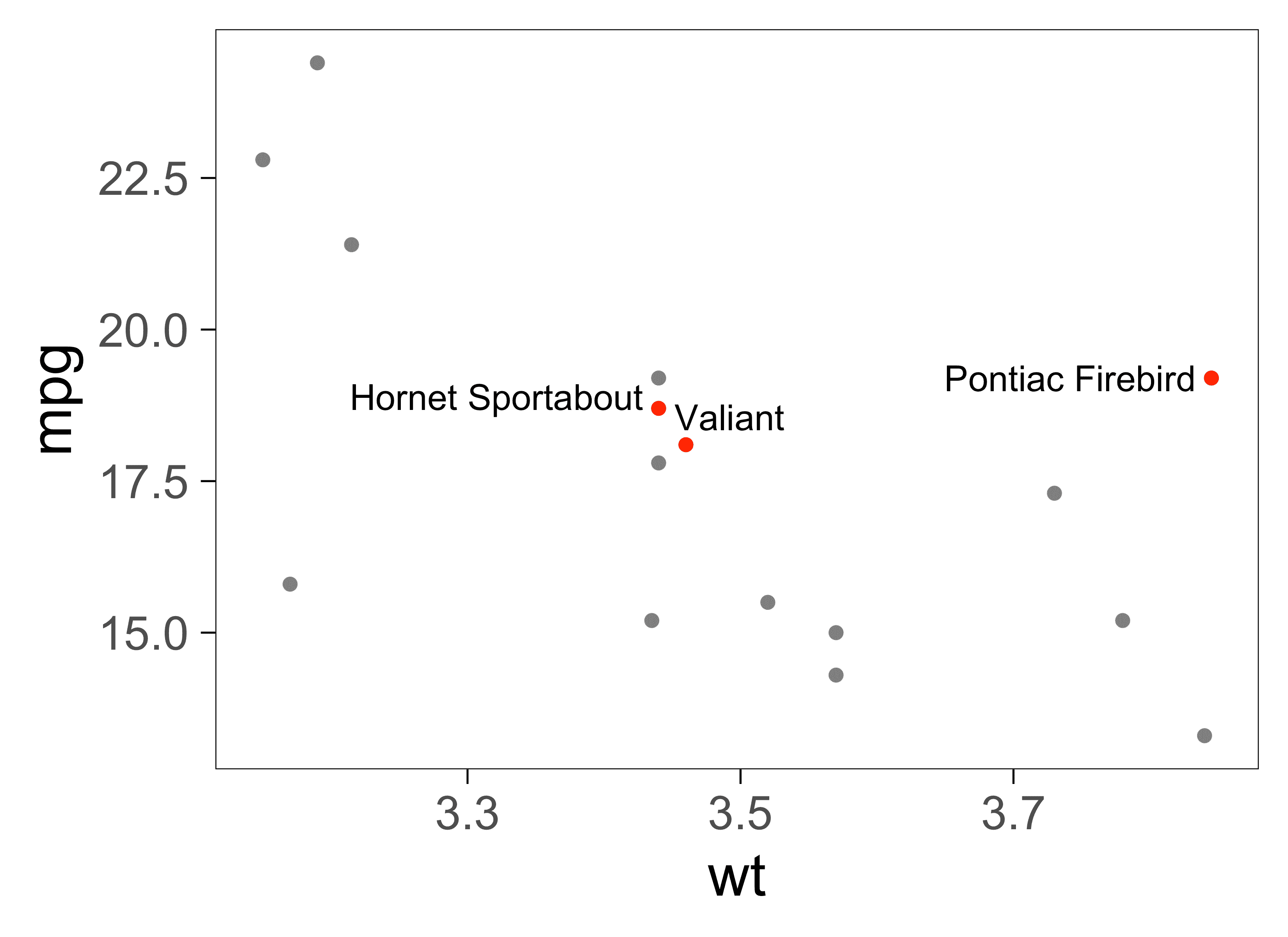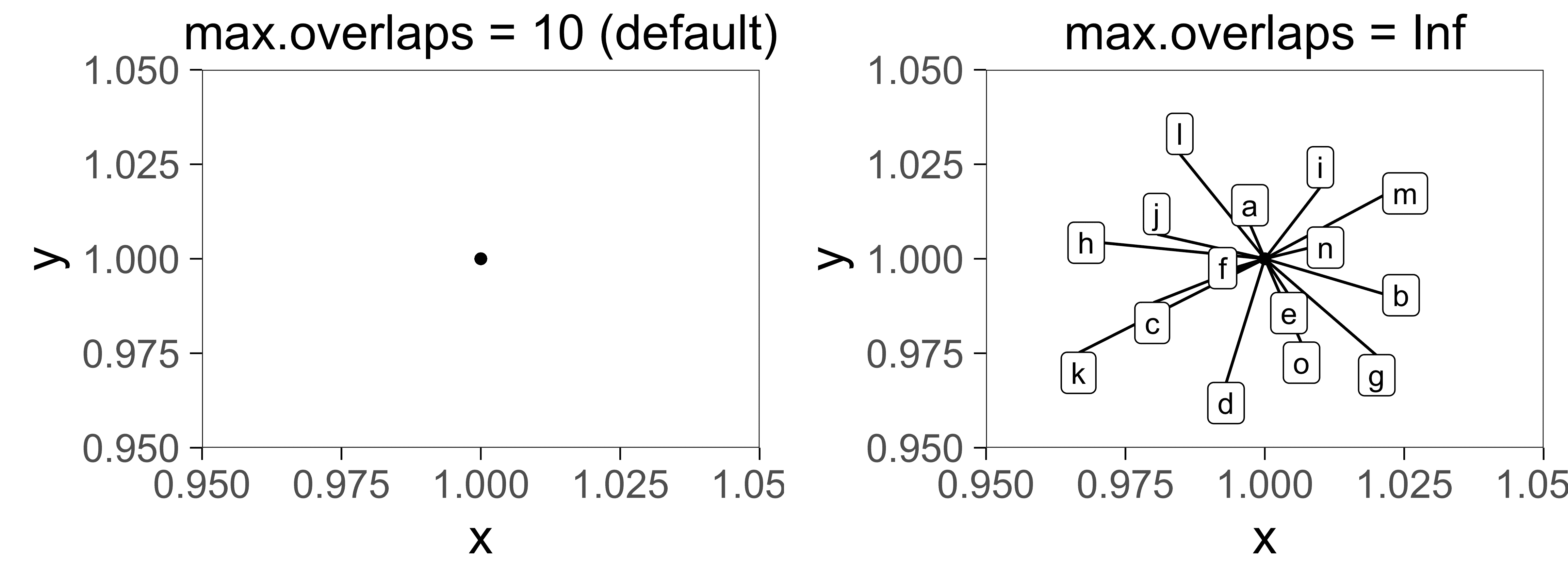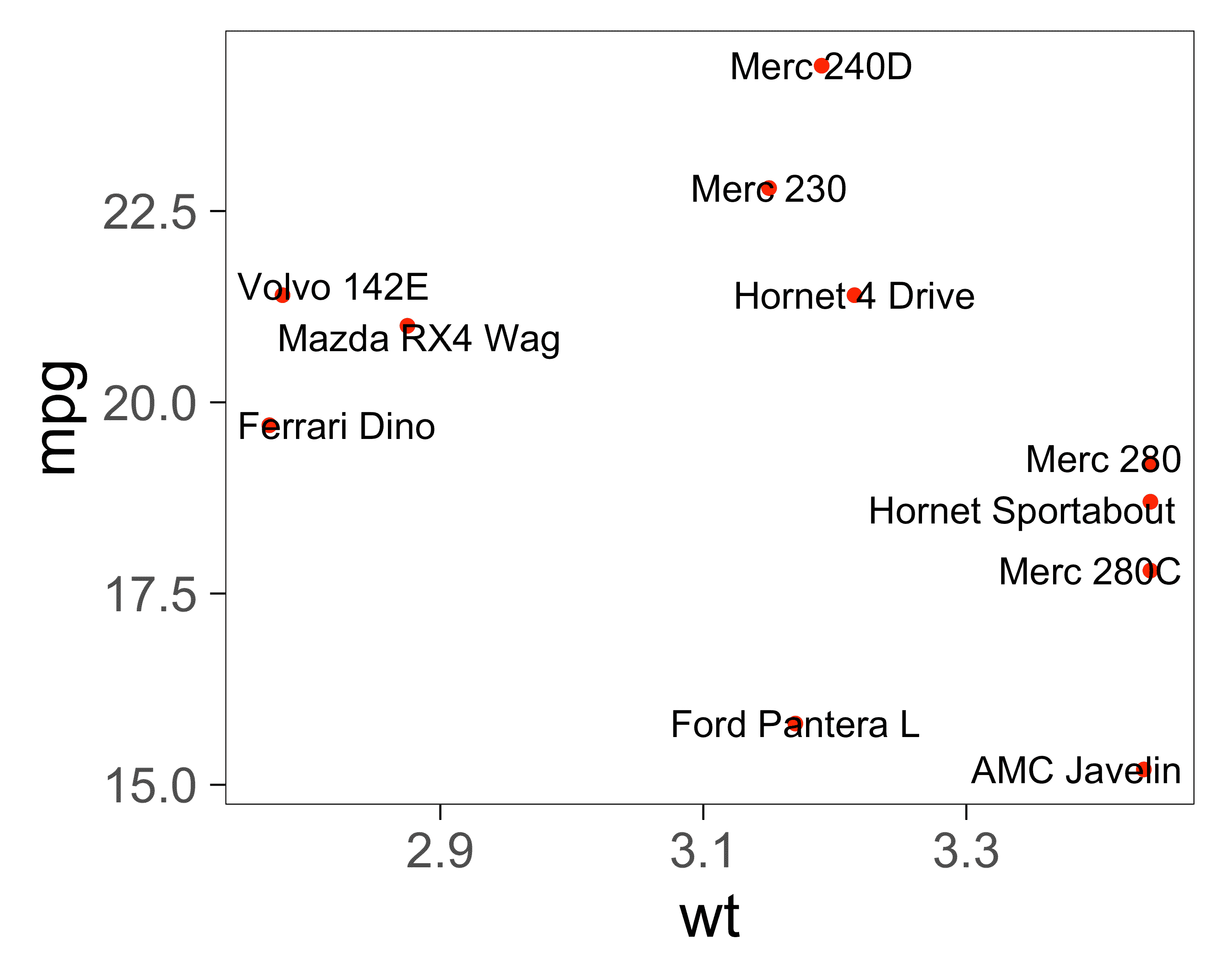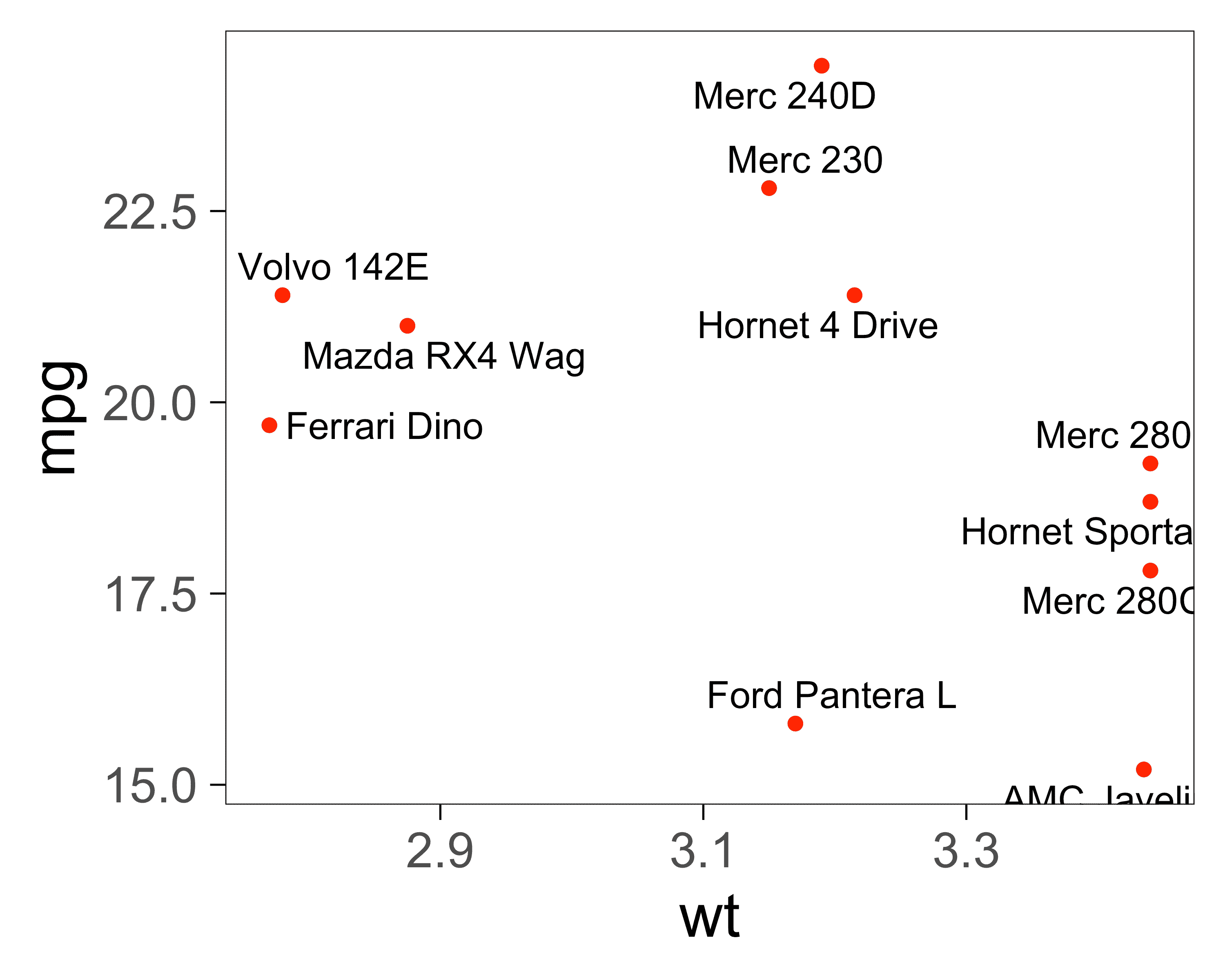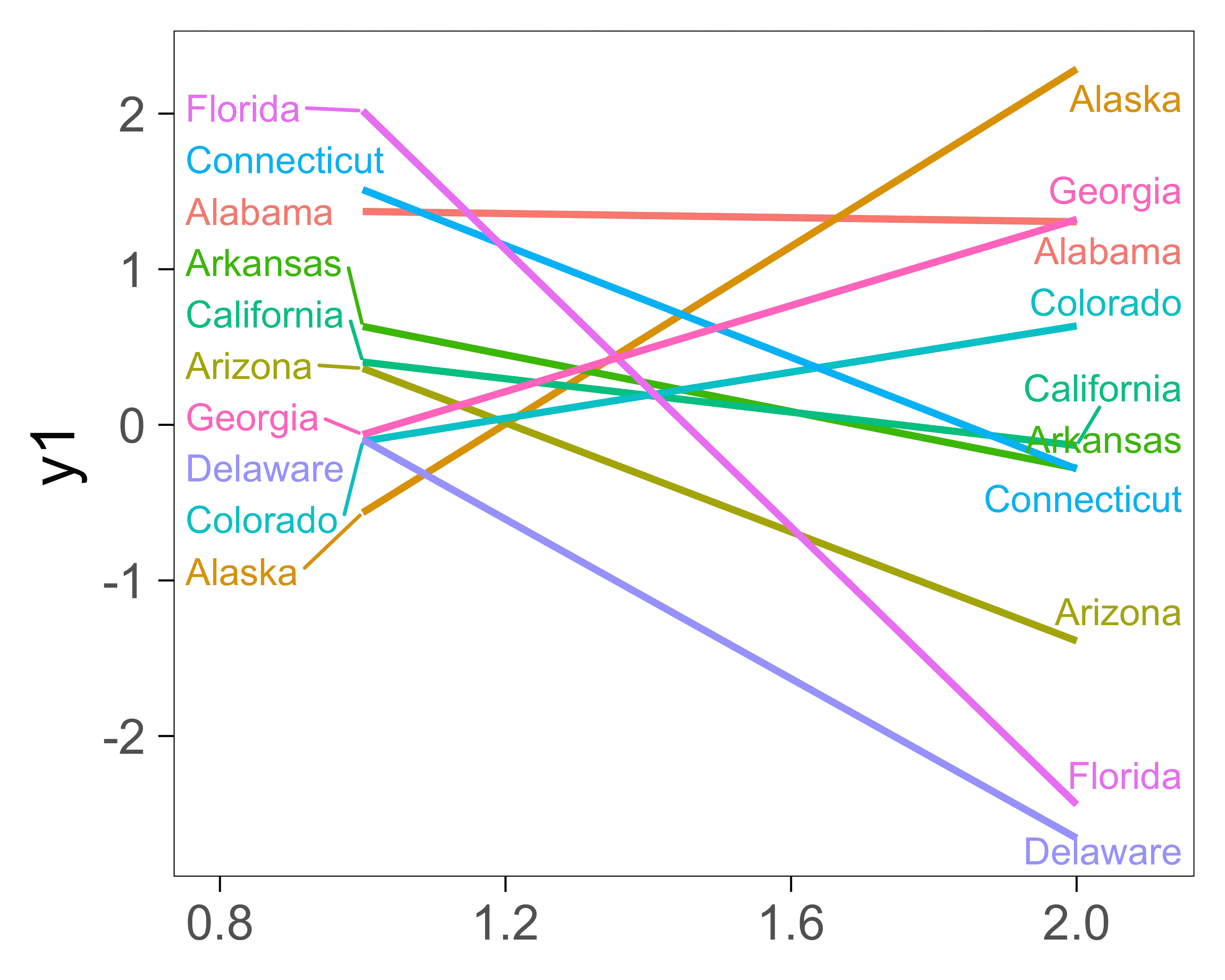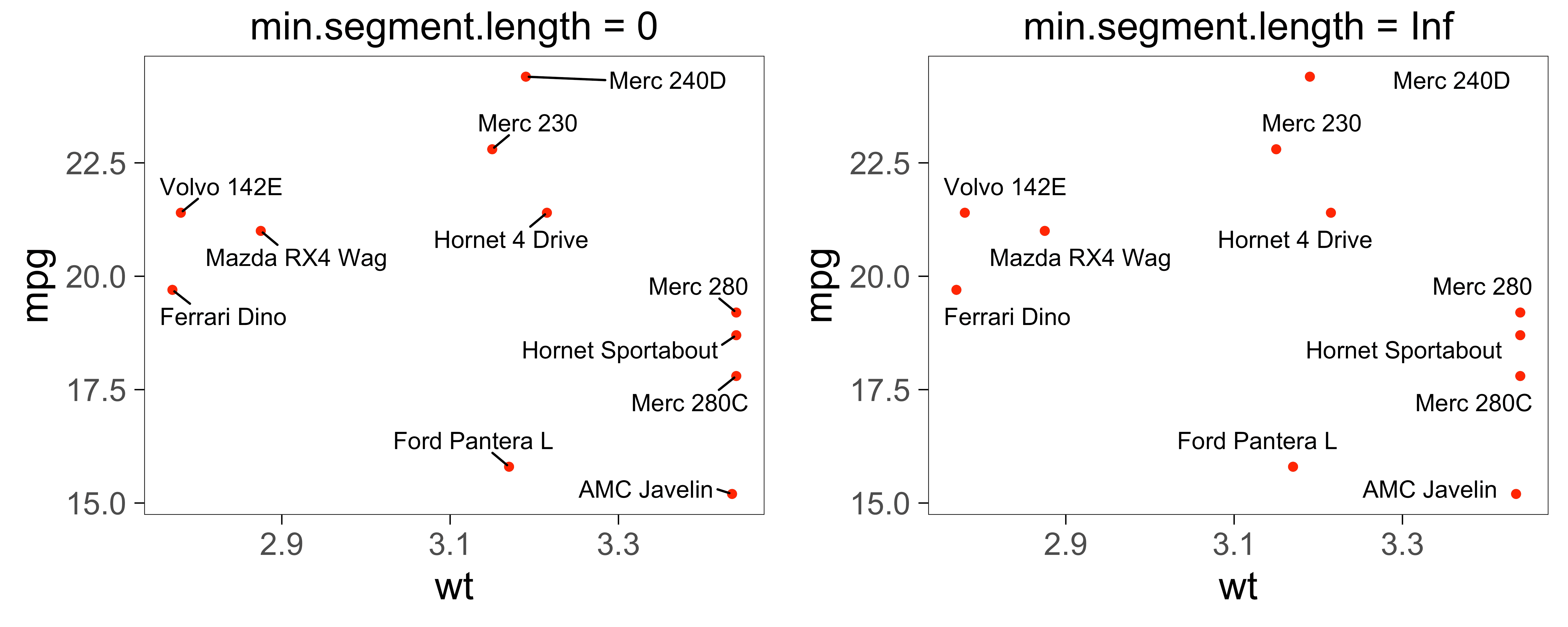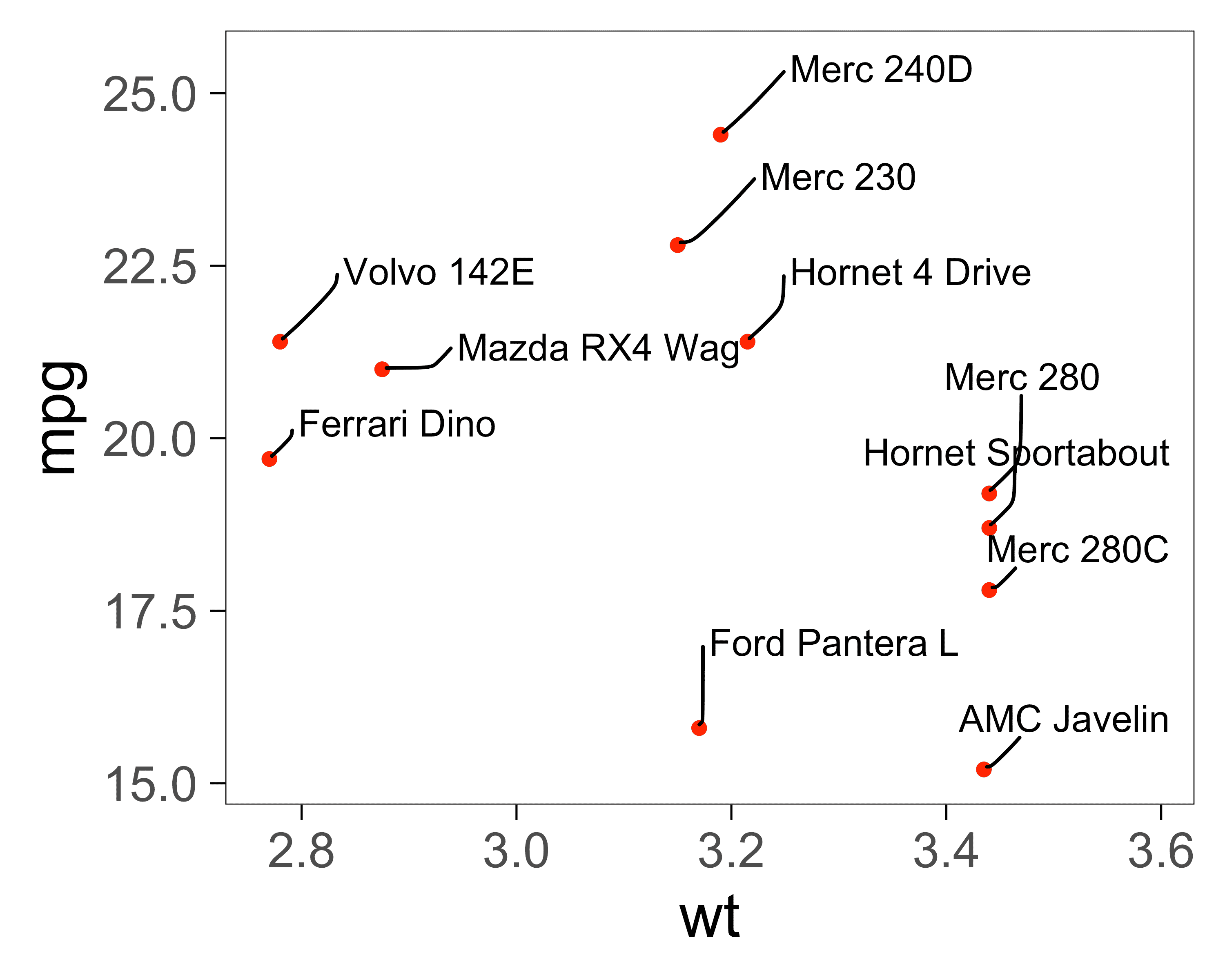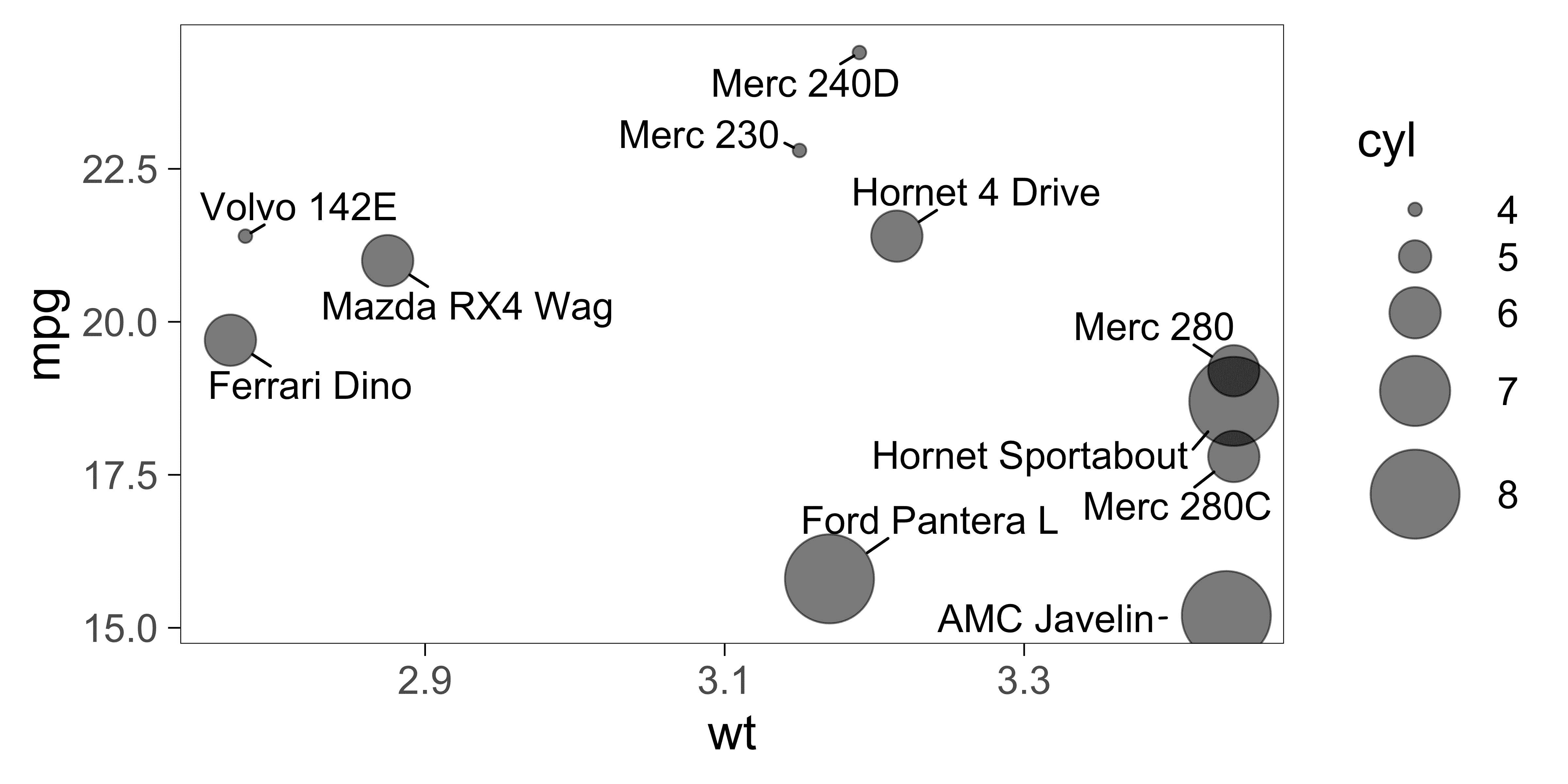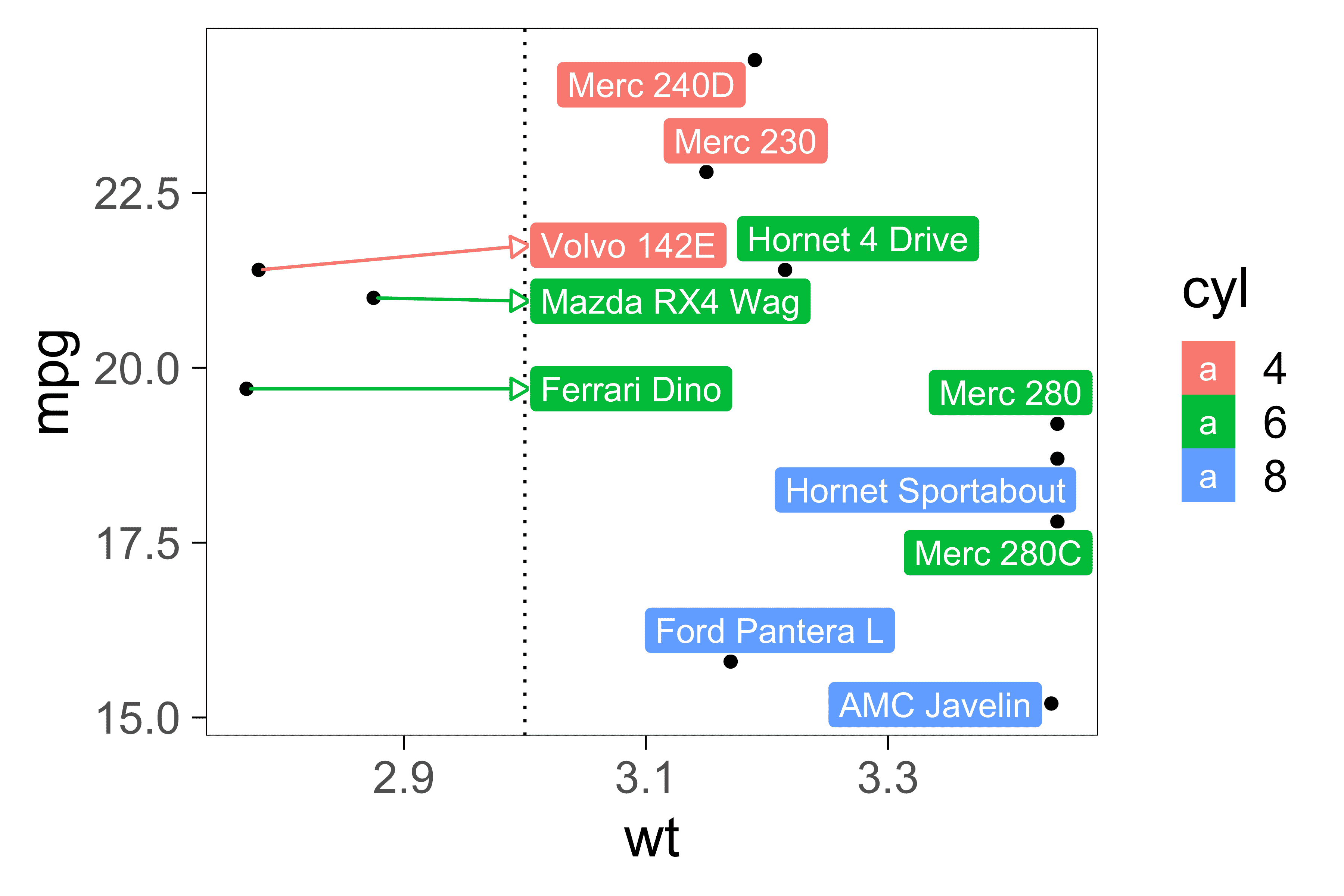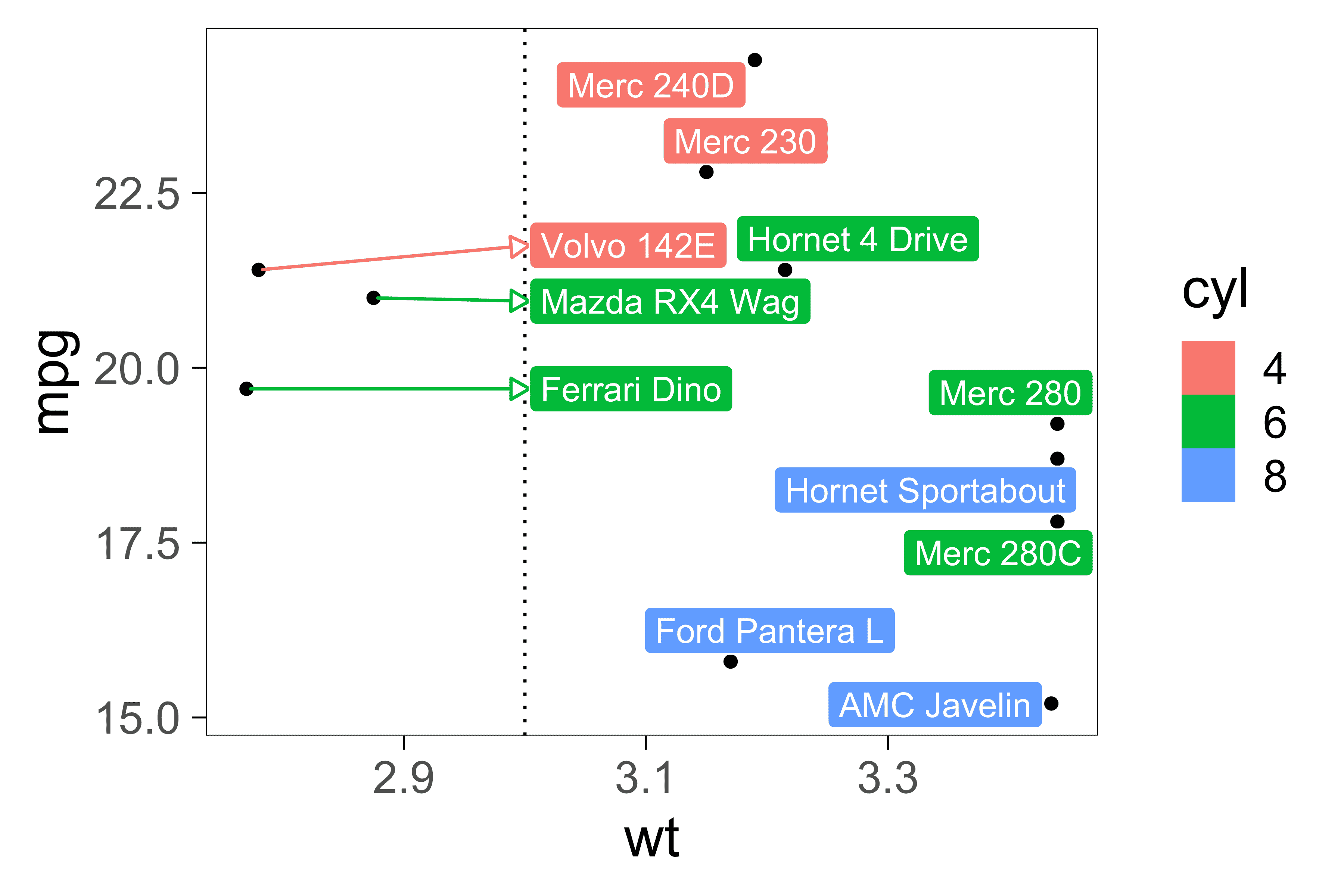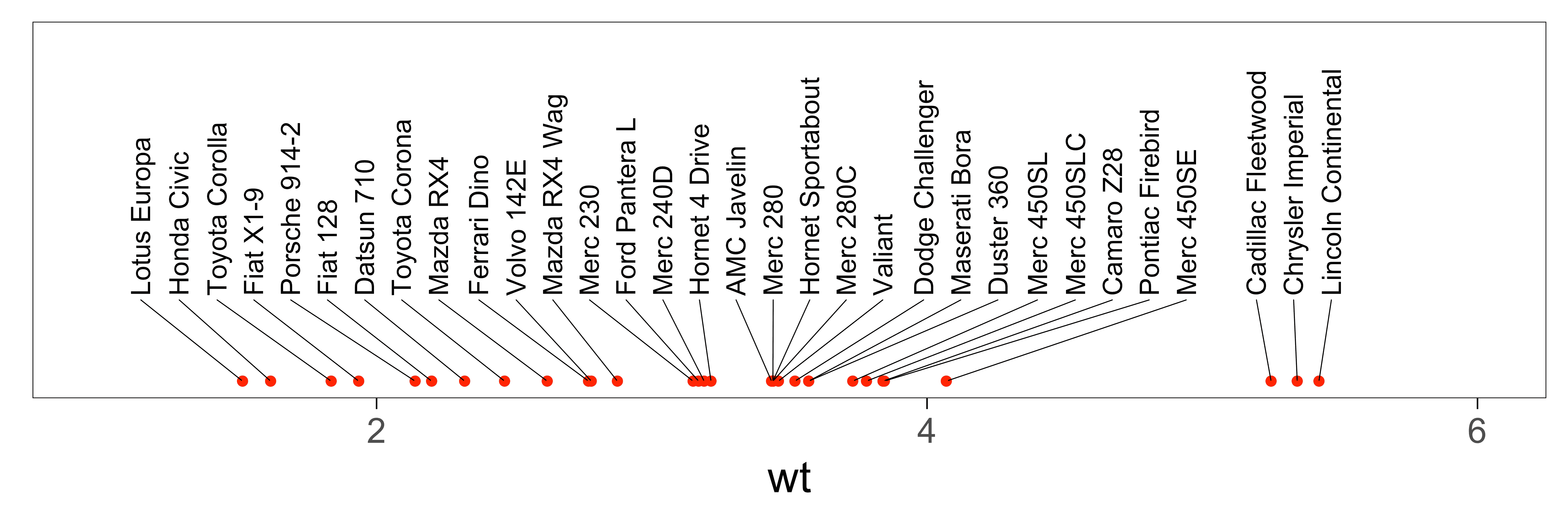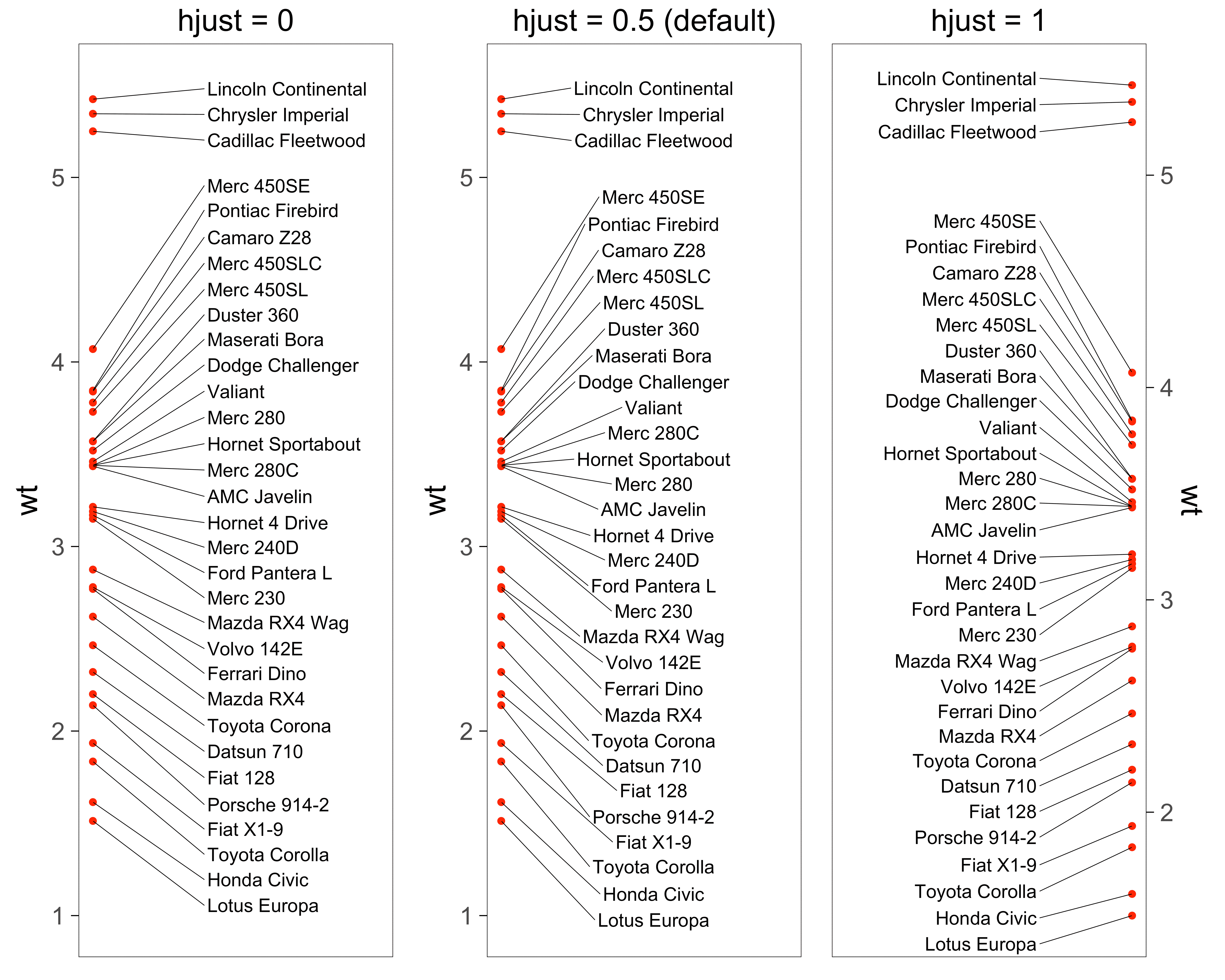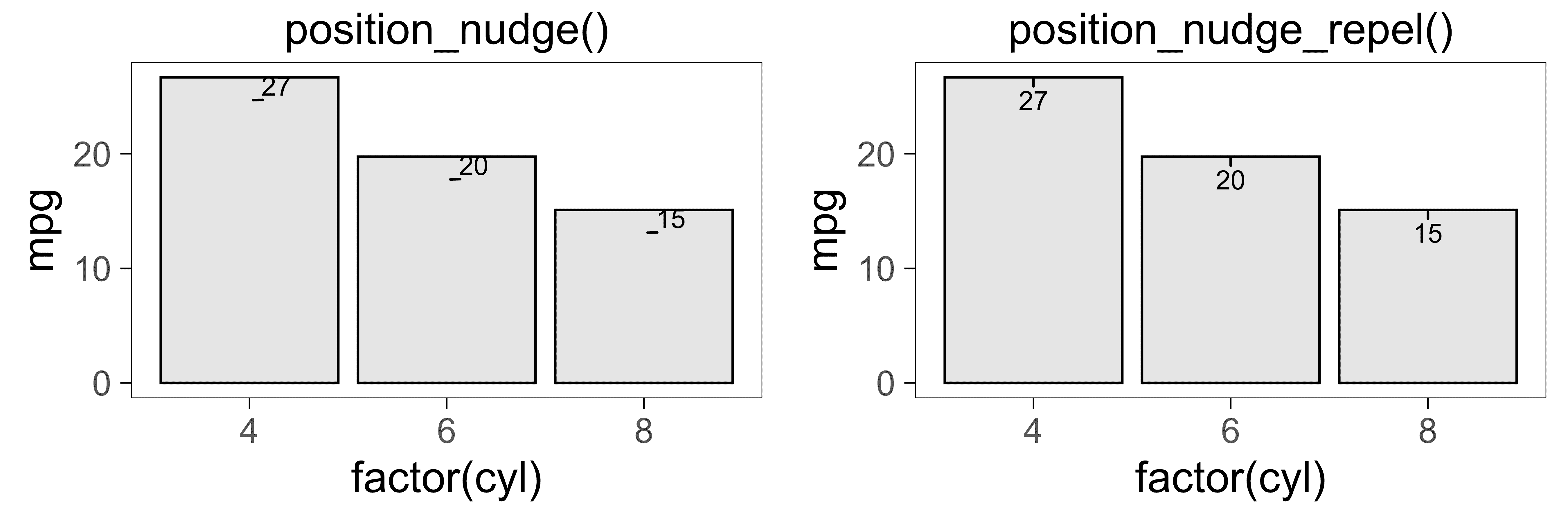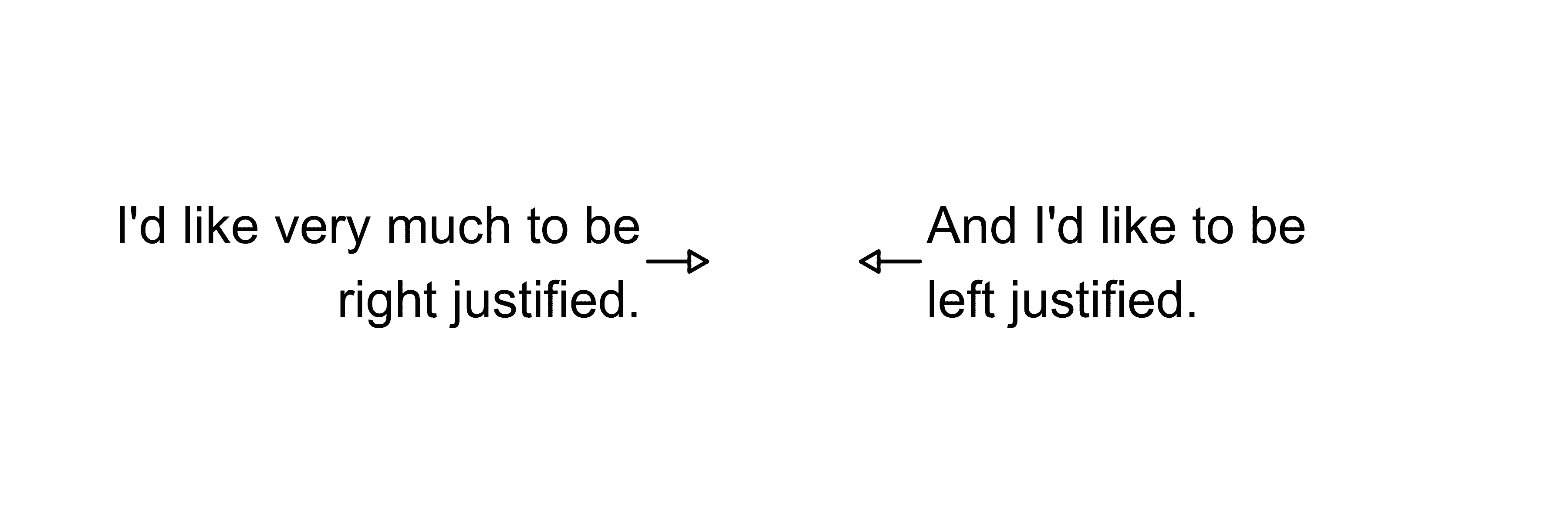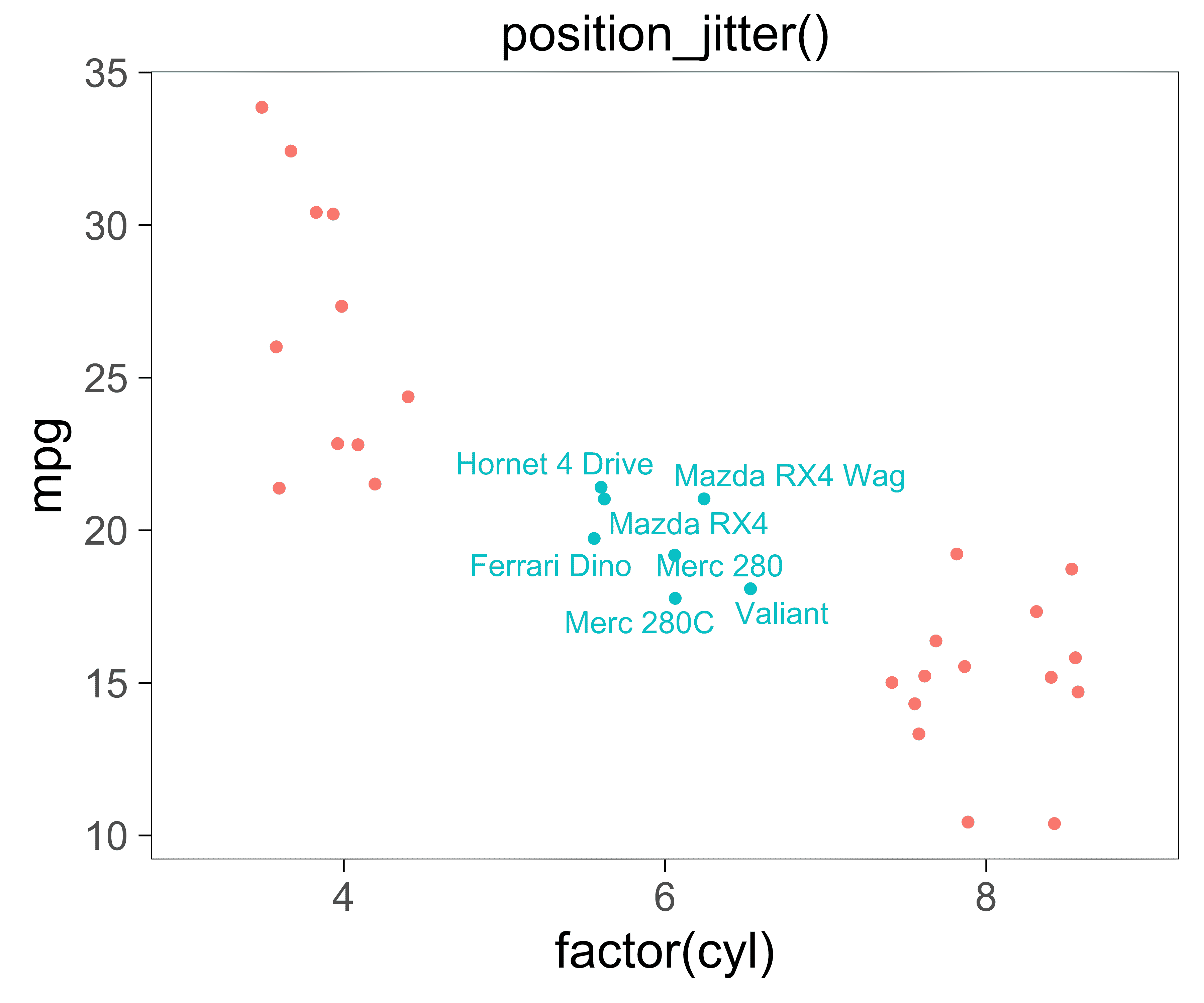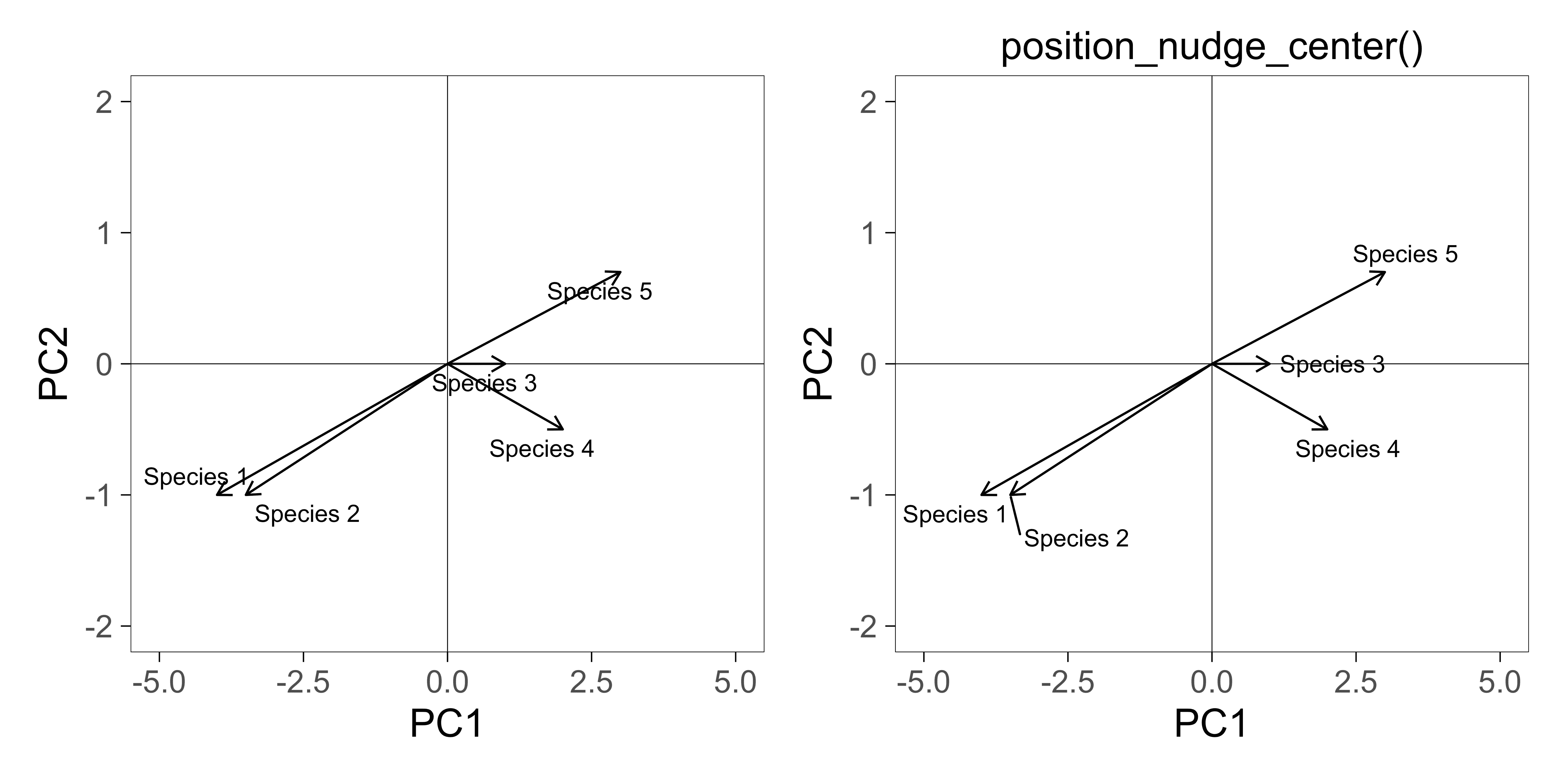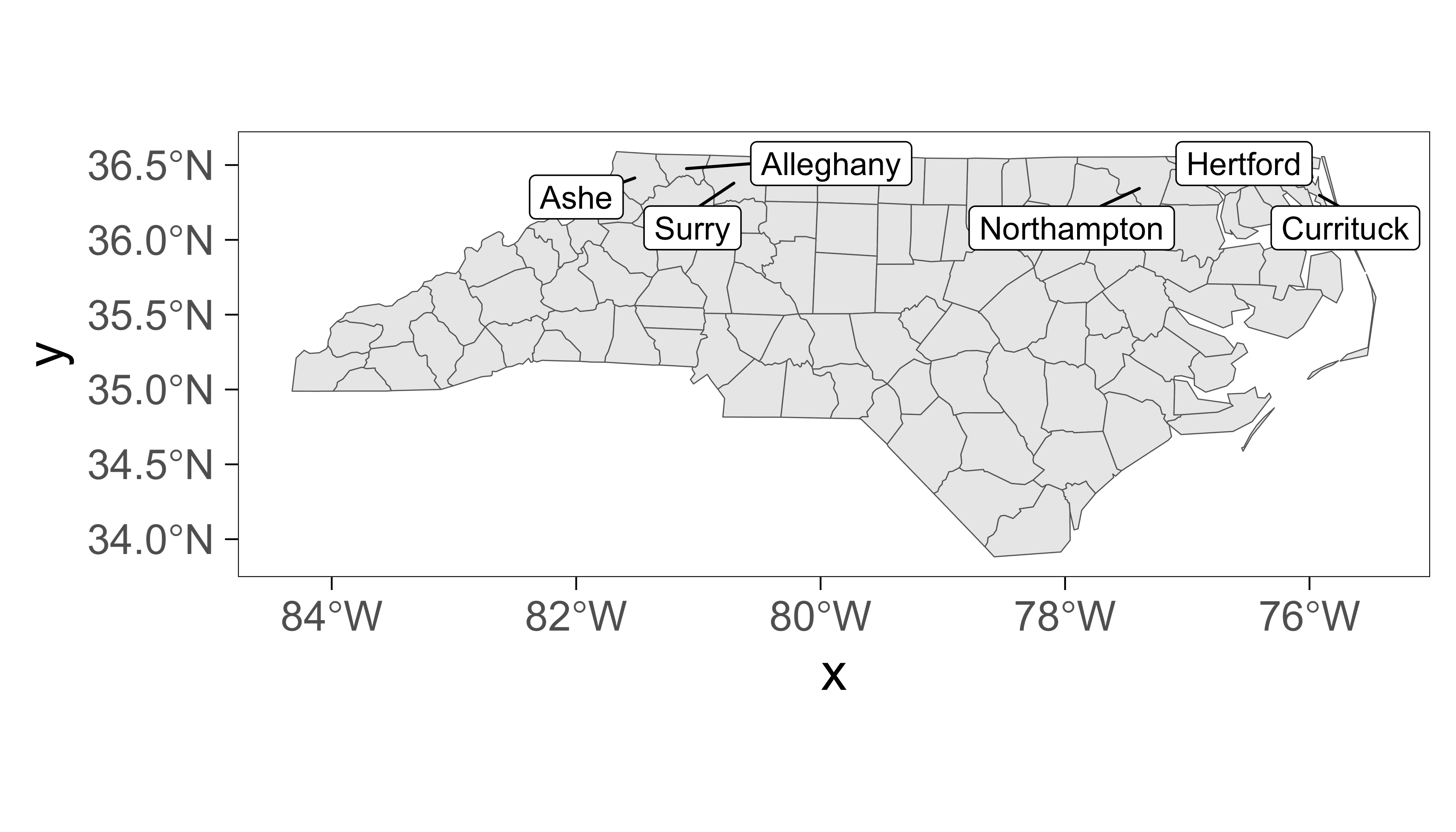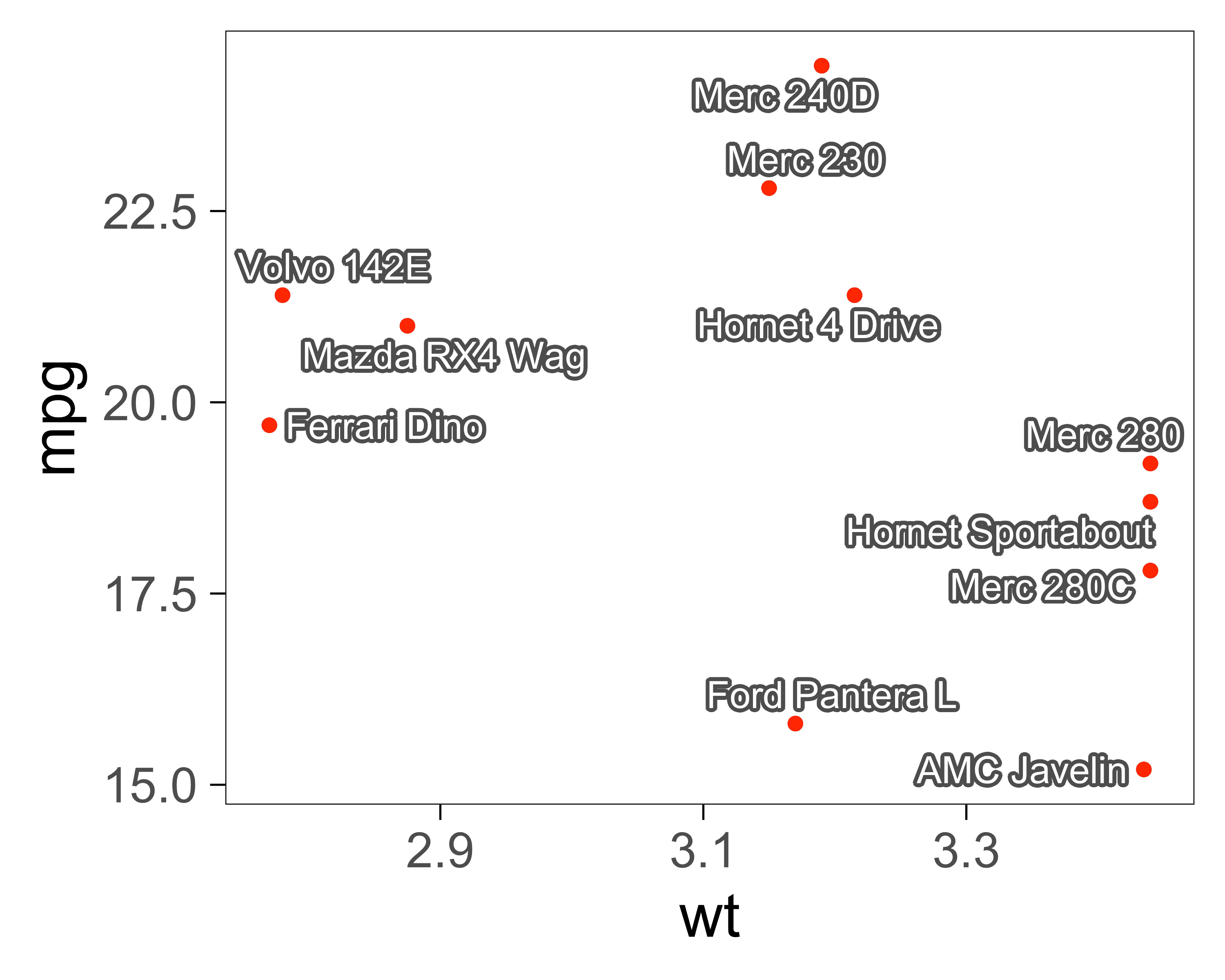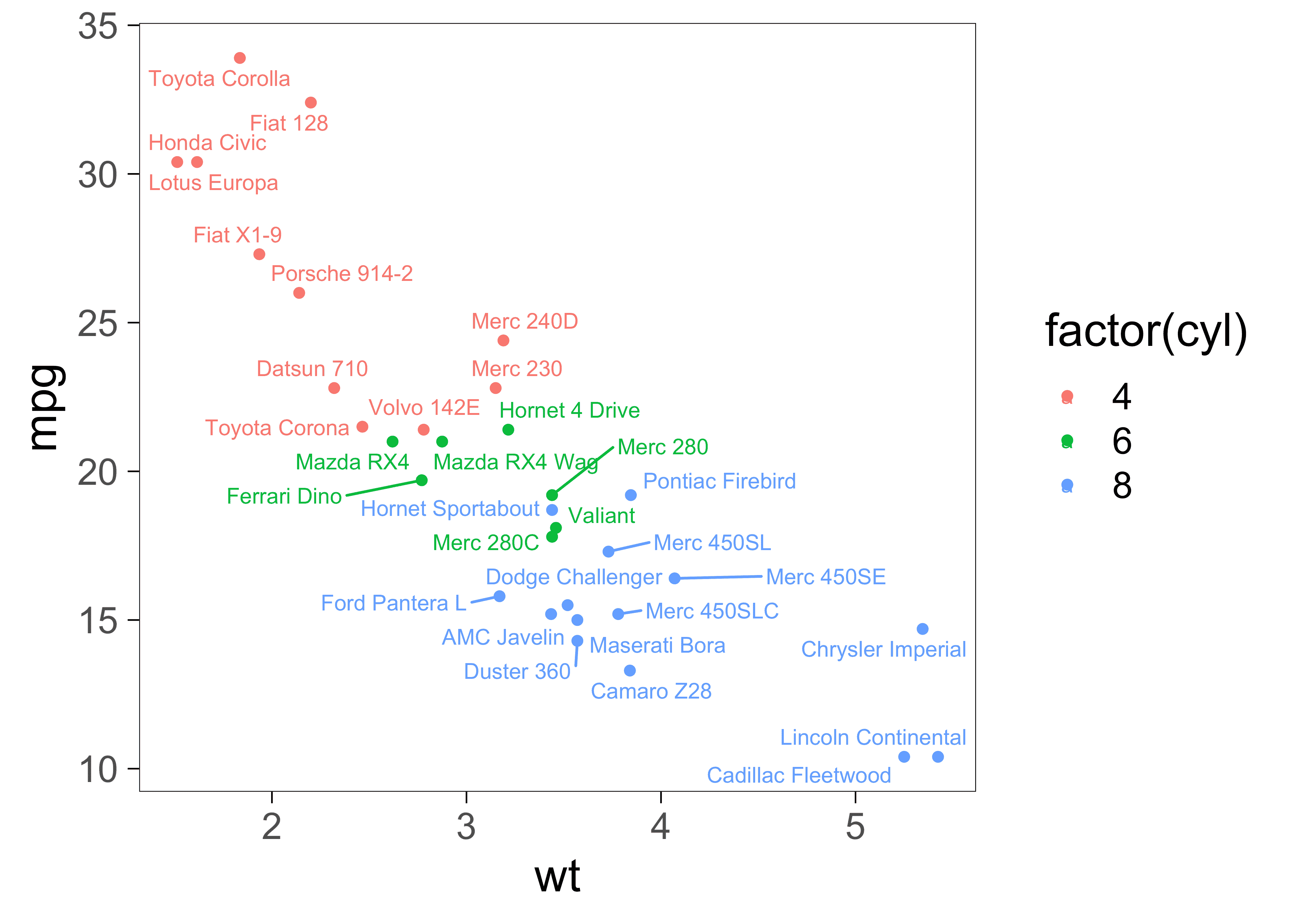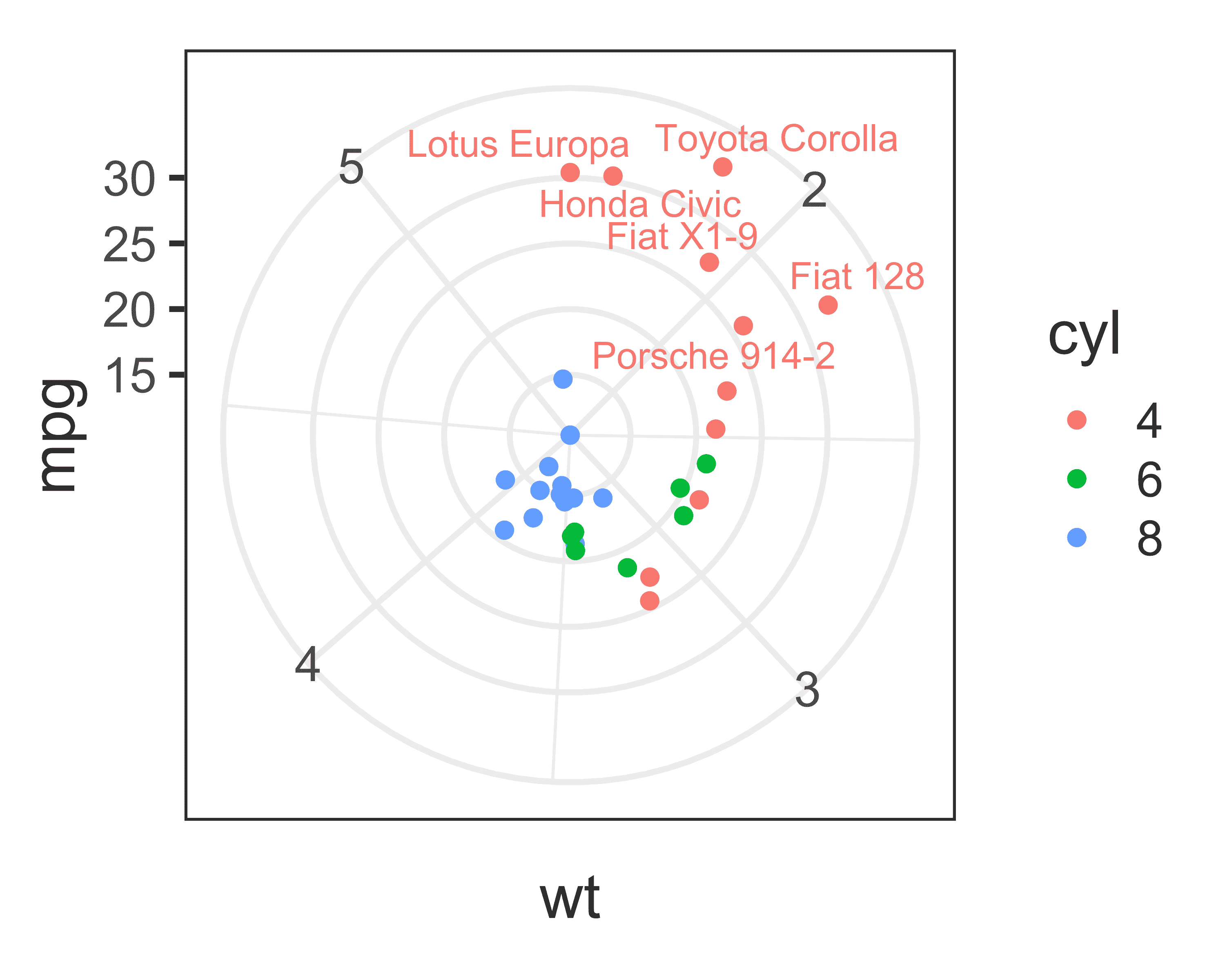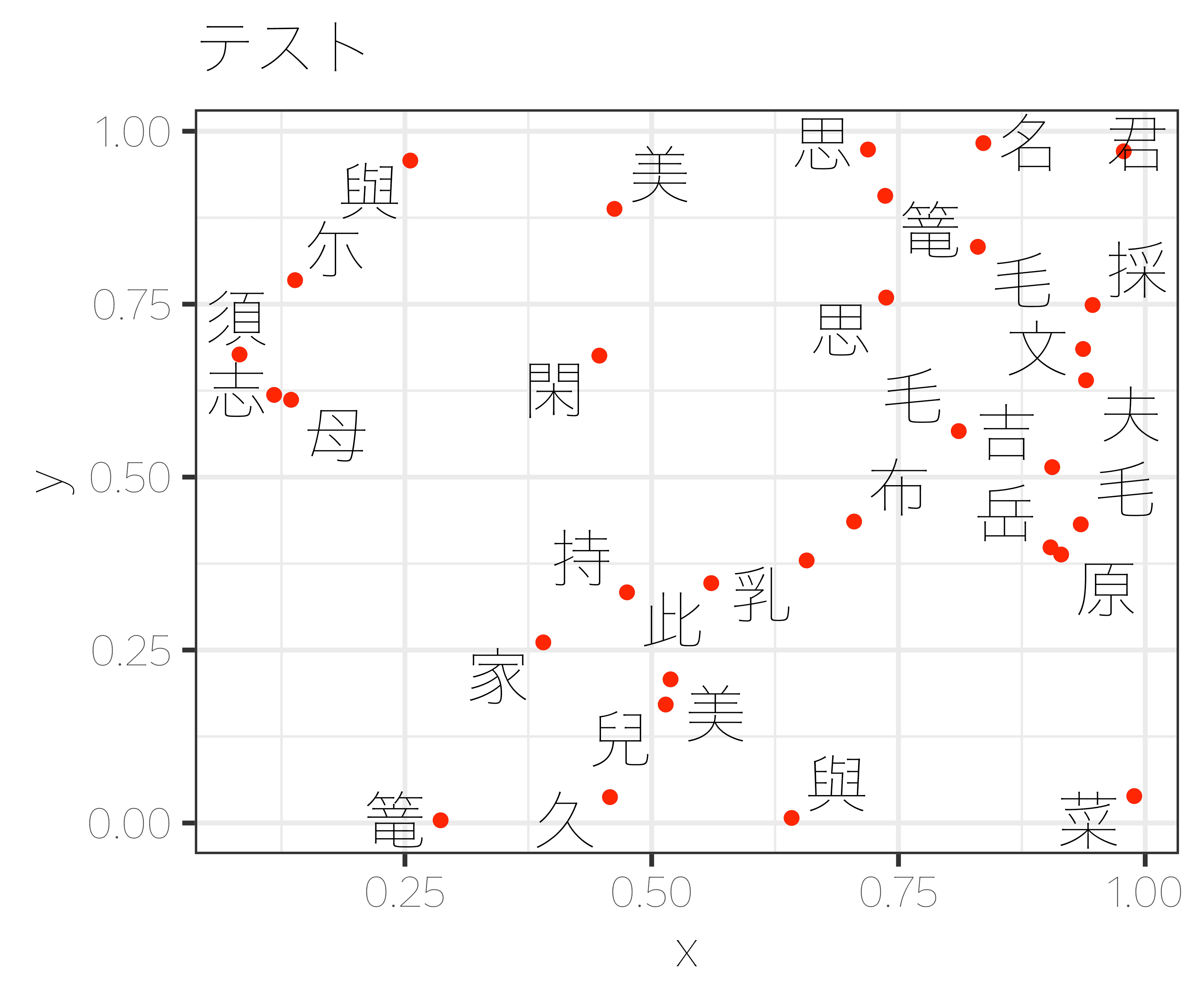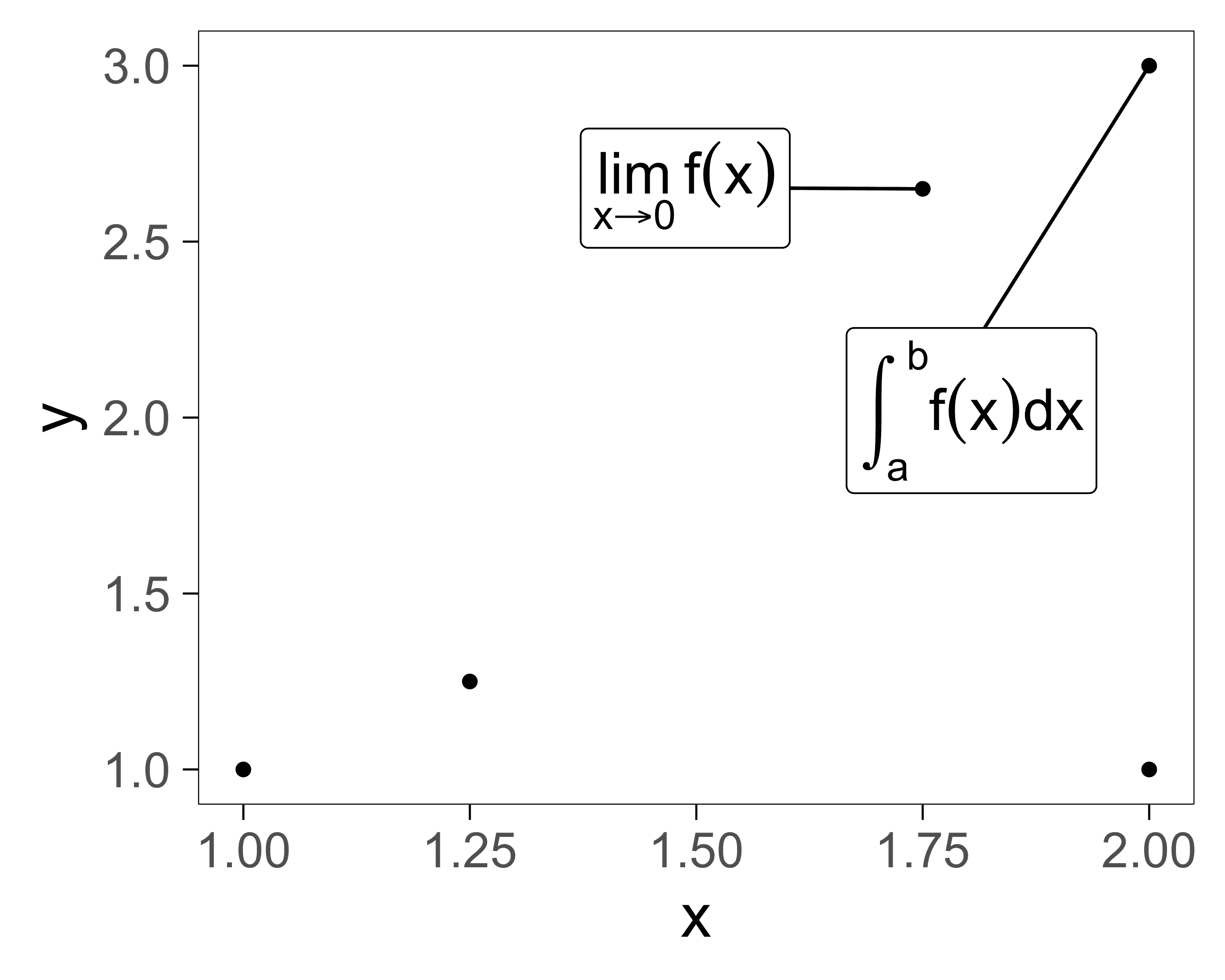ggrepel provides geoms for ggplot2 to repel overlapping text labels:
geom_text_repel()geom_label_repel()
Text labels repel away from each other, away from data points, and away from edges of the plotting area.
library(ggrepel)
ggplot(mtcars, aes(wt, mpg, label = rownames(mtcars))) +
geom_text_repel() +
geom_point(color = 'red') +
theme_classic(base_size = 16)# The easiest way to get ggrepel is to install it from CRAN:
install.packages("ggrepel")
# Or get the the development version from GitHub:
# install.packages("devtools")
devtools::install_github("slowkow/ggrepel")See the examples page to learn more about how to use ggrepel in your project.
Click one of the images below to go to see the code example:
Please submit an issue to report bugs or ask questions.
Please contribute bug fixes or new features with a pull request to this repository.

